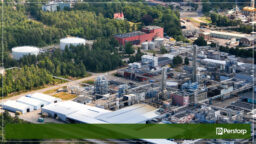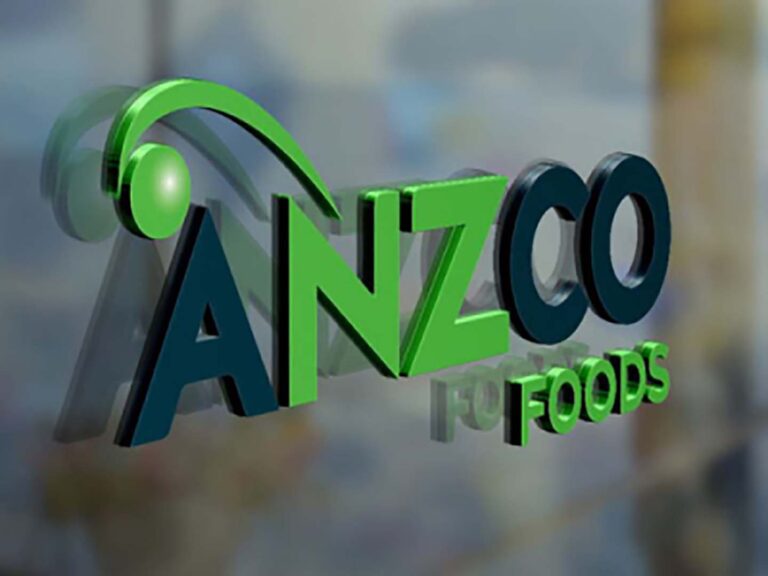Meat processing
The Dutch company has remained true to its artisan heritage, but with 17 production sites and two distribution centres across the Netherlands, Belgium and Germany, a finely tuned supply chain is a must.
In 2018, the rapid expansion was starting to catch up with the company’s existing systems and processes, so Group of Butchers turned to Supply Chain Company for help and advice.
Rapid expansion, but not without challenges
Group of Butchers has grown rapidly through acquisition and autonomous growth – a strategy that has propelled the company to become a 280 million Euro operation. Such growth brings challenges, however. Bart Kroot, Supply Chain Manager at Group of Butchers, says, “Since I joined in 2018, the group has added 12 production sites. It’s an exciting time for everyone here, but also a challenge from a supply chain perspective. Our acquisitions all come with their own history, IT systems and ways of doing things, so integrating them into a greater supply chain can be tricky.”
“We did all our forecasting and replenishment planning in Excel. The spreadsheets were getting too complicated which left us exposed.”
Bart Kroot,
Supply Chain Manager
Excel apps reaching the end of the road
By the end of 2018, Group of Butchers had outgrown its planning capabilities. Bart explains, “We did all our forecasting and replenishment planning in Excel. The spreadsheets were getting too complicated. On top of that, we only had a limited number of people who fully understood how it all worked, which left us exposed. We needed a solution that could support our planning needs and growth strategy.”
Time for change
In early 2019, COO Patricia Stultjens made contact with Supply Chain Company to get the ball rolling. Her instruction was to help future-proof Group of Butchers’ supply chain processes and systems and enable best-in-class delivery performance with minimum waste.
Following a two-day workshop to map the current processes and physical flows, Supply Chain Company prepared a “to-be” supply chain model and a list of software vendors for evaluation.
Bart Kroot explains the critical role Supply Chain Company played throughout the project. “At the end of the day, we’re a meat producer – not an IT company. They brought a lot of supply chain experience to the table and helped us structure the project, including process improvement suggestions and how to shortlist and evaluate software vendors.”
When the software selection phase ended, the entire project team had come to the same conclusion.
“We realized that we needed a supply chain planning solution, not a new ERP system. Optimity ticked all the main boxes for us. Coming from an Excel background, Optimity’s pivot-like interface was attractive. We didn’t have to give up the flexibility we were used to with Excel. We also liked the modularity of Optimity’s application suite, which allowed us to implement at our own pace,” says Bart.
The industry expertise and support that Optimity could offer was also critical to Group of Butchers’ decision. Bart continues, “Optimity displayed a deep understanding of our business and industry, and we felt they were the type of company that would go the extra mile to support us. To us, Optimity is not just a software vendor. It is a company we can rely on as trusted advisors for our supply chain issues.”
“The forecast quality improved immediately, and after just four weeks of shadowing, the team was ready to turn off the old Excel solution.”
Bart Kroot,
Supply Chain Manager
Better forecasts equal better business
The distribution centre in Boxtel (NL) is the hub of the company’s physical supply chain and serves as the base for the demand planners that orchestrate it.
The project team started with demand forecasting, which would be critical to the subsequent production planning implementation.
The company was working with a 1-2 week forecast, calculated in Excel as a simple average of the last ten weeks of sales with the highest and lowest values removed. This was replaced by an automated, rolling 8-week forecast in Optimity. The forecast quality improved immediately, and after just four weeks of shadowing, the team was ready to turn off the old Excel solution.
Bart explains the current setup, “Optimity provides much better support for our forecasting process. As a result, our two demand planners are more effective in their work and now work more closely with sales and marketing to plan for sales promotions and product phase-ins and phase-outs. Optimity has also given them the visibility they need to spot and address any potential stock and shelf-life issues before they become a problem.”
Next stop: Production planning
With some production lead times as long as seven days, forward visibility is critical to managing shelf-life for sensitive meat products. So a few weeks later, the production planning model was set up and tested in Optimity’s Supply Chain Optimizer, taking full advantage of the improved forecast accuracy and the longer planning horizon in the new demand planning solution.
The four manufacturing sites included in the initial rollout now receive weekly updates of their production requirements for the next eight weeks. And while detailed scheduling remains a local responsibility, the more stable and forward-looking weekly production plan has made life much easier at the production sites.
A planning solution that brings the business together
With so many acquisitions, and an equal number of ERP installations and locally maintained data sources, it would take quite an effort to ensure master data consistency. Bart expands on this issue, “This part of the project took more time than anticipated, but it was something we had to get through. For example, we had situations where two production sites used the same product ID for completely different items. Fortunately, Optimity knows how to address data inconsistencies, and they could suggest a pragmatic solution. As a result, we now have a planning system that links our entire supply chain together.”
“We’re cutting stock levels by 5 to 10% with maintained delivery performance. We’re delighted with these results.”
Bart Kroot,
Supply Chain Manager
Tangible results
Group of Butchers is currently live with Optimity across five production sites and the central warehouse in Boxtel.
Forecast accuracy is up by almost 10%, including a significant improvement on the individual item level.
A recent launch of Optimity’s Inventory Optimizer has seen further improvements in stock levels and delivery performance, with stock levels 5-10% lower. Bart Kroot is understandably happy with this last achievement, “We’re cutting stock levels with maintained delivery performance. We’re delighted with these results.“
Looking to the future
Group of Butchers is currently preparing for the next rollout stage. Next up are three newly-acquired Dutch plants.
“We’ve proven that the solution works and that it delivers what the business needs. The main difference with the next three sites is that we’ll use a slightly more granular model in Supply Chain Optimizer to produce daily production plans.”, says Bart Kroot.
The plan is then to roll out Optimity to all remaining factories. “The goal is to eradicate Excel”, and Bart explains that Group of Butchers intends to continue working with Supply Chain Company as an advisor.
Asked if there’s anything he’d like to share with other companies considering a similar project, Bart picks up on the use of standard functionality. “We tried as much as possible to fit our processes to the standard system functionality. We feel this will keep us in good stead going forward and simplify future implementations and upgrades. It has also forced us to challenge some of our old processes.”
“Supply Chain Company and Optimity made us re-think what we were doing and helped us implement an entirely new way of planning – not just a replication of what our old Excel files were doing.”
Bart Kroot,
Supply Chain Manager
He also mentions the decision to engage an external project manager. “We used a third party for the day-to-day management of the project. I think this helps maintain a good balance in the project and made sure things were progressing to plan.”
Bart offers one final piece of advice, “Most important of all, take your time deciding whom you’re partnering with. Look for advisors and software vendors with proven industry experience who can offer more than just software. The combination of Supply Chain Company and Optimity was just what we needed to succeed, and I’d have no hesitation recommending them to anyone looking to ready their supply chain for whatever the future may bring”.
About Group of Butchers
Since its foundation in 1997, Group of Butchers has been supplying high-quality, traditionally prepared meat products, ready meals, vegetarian products and soups and salads to all major supermarkets in the Netherlands, Belgium and Germany. Over the past eight years, a total of 10 family businesses have joined Group of Butchers. As a result, the company has grown into the market leader in artisanal meat products.
About Supply Chain Company
Supply Chain Company is a specialized consultancy and implementation firm working with international clients to accelerate and optimize their supply chains. Supply Chain Company has successfully carried out projects in a wide range of industries, including retail, food & feed, agriculture, pharmaceuticals, chemicals and discrete manufacturing. The company uses proven solutions and concepts throughout the project life-cycle, and project handover only occurs when the client’s business goals are met and everyone is completely satisfied. Supply Chain Company is an implementation partner of Optimity.
Get all the latest industry trends, updates & news from Optimity
Group of Butchers
Tilburg, Netherlands
900+
EUR 280 Million















